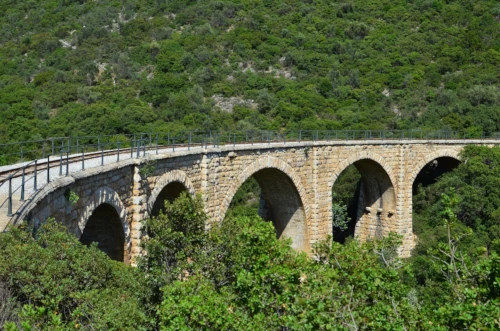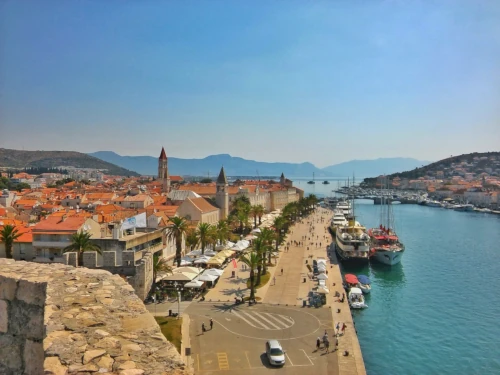How to travel in the Balkans in 2024?
Depending on your type of traveling, you decide for your next destination. People choose a Balkan itinerary, because they get to see where western culture meets with the eastern one. As an illustration, European travelers go in the Balkans to experience different cultures and traditions. From Thracian ancestors in Bulgaria and Dacian ancestors in Romania on the east of the Balkans, to Illyrian ancestors on the Western Balkans. Greek mythology in the south, to Austrian – Hungary empire in the north of peninsula, the Balkans represent a blend of history.

Definitely traveling across different countries is unique experience. In the Balkans, it is sometimes even frustrating when traveling from one country to another. Some countries are not part of EU, some are full members, and few are members of EU, but not Schengen zone. What do you need to know before traveling in the Balkans? How to plan and what countries documents are required to cross borders during 2024? This article will update you and make it easier to when planning to visit this diverse region.
First, you need to know the status of each country in relation with EU zone:
- Greece, Slovenia, and Croatia are full members of EU and Schengen zone (an area of European countries that have removed all type of border control in their mutual borders)
- Romania, Bulgaria are members of EU zone, and as of 31 March 2024 are members of Schengen areas
- Western Balkan countries (Albania, Bosnia & Hercegovina, Montenegro, North Macedonia, Kosovo, Serbia) are not members of EU or Schengen area (there are border controls)
The infrastructure in the Balkans is in the developing stage and the connections between countries are restricted due to its geography terrain as well. There are couple of air connections, but as a true explorer in the soul, consider the land transportation to get closer to the nature and cities.

TRAINS
There are several trains connections between Ljubljana to Zagreb or vice-a-verse. Check out Train Croatia or Rail for schedules and prices. In the rest of the Balkans aren’t available train connection between countries, unless you are an adventurer and want to consider the scenery route from Bar (Montenegro) – Belgrade (Serbia). Check out for more information Seat 61

BUS
Buses are the most popular way of transportation in the Balkans, though they are not the most comfortable and convenient in time. Not all the schedules or tickets are listed online, which requires sometimes to go physically in the main bus station and get a ticket. Keep in mind that you need to have local currency or you will be dragged around.
The well-known bus operator FLIXBUS operates in countries such as Romania, Bulgaria, Croatia, Slovenia, Greece, Serbia. Other website platforms like Bus Croatia or Get By Bus can be helpful to plan in advance your itinerary in the Balkans.
Tip: If you buy the bus ticket physically at the bus station or driver, the prices will be 1-2 € less, but the risk is that there might not be available seats.

BOAT
Sailing by boat is another amazing way to travel in the Balkans. Croatia offers many choices to visit its island from north to south. Check out for schedules Croatia Ferries
Thousands of islands of Greece can be discovered best by a ferry. You can also cross from Greek Island of Corfu to Sarande, Albania in only 45 min. Schedules & prices Greece Ferries
Other way to explore the Balkan peninsula by boat can be ferries along Danube river in Serbia or Romania.
TRAVEL DOCUMENTS
Remember that when crossing countries in the Balkans, there is always a border control. Some are not popular, the rest might be very busy and you have to wait hours in queue, especially when travelling by bus. Passports are mandatory to be presented and the expiration date shouldn’t be less than 6 months. When traveling with children younger than 18, you need a permission from both parents. If you need a Schengen visa, please show it first the border police.
BEST WAY TO TRAVEL IN THE BALKANS
Consider to consult with a local travel expert, before traveling in the Balkans. Certainly, you can find enough information online, yet travel guides can share coherent tips to make your life easier. Private or small group tours give you great timing to travel slowly and experience local cultures. Contact here for a customised Balkan Trip.
TOP PLACES TO VISIT IN THE BALKANS
Kotor
Hidden between grand mountains, standing in the Bocca Bay facing the Adriatic Sea is the old town of Kotor. A beautiful Venetian style city with stone buildings and narrow streets, Kotor was once an important maritime port. Today, it is listed under UNESCO World Heritage and hosts travelers from around the world. Walk up the stairs to medieval castle of San Giovanni to admire the amazing panorama of Bocca Bay.
Dubrovnik
Dubrovnik, often referred to as the “Pearl of the Adriatic,” is a captivating city located on the stunning Dalmatian Coast of Croatia. Dubrovnik boasts a fascinating history that dates back to the 7th century. The city evolved into a powerful maritime republic, known as the Republic of Ragusa. The Old Town, a UNESCO World Heritage Site, is a living testament to Dubrovnik’s historical significance. One of the highlights of Dubrovnik is its impressive city walls, which encircle the Old Town. Stretching over 1,940 meters, these walls offer panoramic views of the Adriatic Sea and the red-tiled roofs of the city.
Tirana
Tirana’s history is an immersive journey through time, reflecting the diverse influences that have shaped the city. Once a part of the Ottoman Empire, the remnants of this legacy are still visible in the form of charming mosques, such as the Et’hem Bey Mosque. The Italian influence, particularly from the era of Fascist occupation, is evident in the architectural landscape. Tirana has undergone a remarkable transformation in recent decades. The cityscape is characterized by a kaleidoscope of colors, with buildings adorned in bright hues – a symbol of the city’s progressive spirit.
Berat
Berat, a gem nestled in the heart of Albania, is a city that seamlessly weaves together history, culture, and natural beauty. Known as the “City of a Thousand Windows,” Berat boasts a blend of Ottoman architecture, ancient history, and a stunning landscape that beckons travelers to explore its wonders. Berat is home to a diverse array of religious structures, highlighting its cultural and religious tolerance. The fertile lands surrounding Berat are ideal for vineyards, and the region is renowned for its wine and olive oil production.
Ohrid
Ohrid is situated on the shores of Lake Ohrid and stands as one of the oldest cities in the Balkan region. Its name is believed to be derived from the ancient Greek word “Lychnidos,” meaning “city of light.” The Byzantine influence is palpable in Ohrid’s architecture, particularly in its abundance of medieval churches. Explore the old town, a bustling market where Ottoman architecture meets vibrant local life.
Sarajevo
Sarajevo’s rich history is woven with influences from various civilizations, and one can witness the Ottoman legacy prominently. Stroll through the cobbled streets of Baščaršija, the heart of the Old Bazaar, where the melodious call to prayer resonates from the iconic Gazi Husrev-beg Mosque. The Austro-Hungarian era left its mark on Sarajevo, evident in the stunning architecture of the Latin Bridge and City Hall. The Latin Bridge holds historical significance as the site of Archduke Franz Ferdinand’s assassination in 1914, a catalyst for World War I.
Novi Sad
As the second-largest city in Serbia, Novi Sad boasts a rich tapestry of history, culture, and natural beauty that has earned it a well-deserved spot on the travel itineraries of those seeking a blend of tradition and modernity. Novi Sad’s history is deeply rooted in a diverse cultural mosaic, evident in its architecture, museums, and historical landmarks. The city’s iconic Petrovaradin Fortress, standing proudly on the banks of the Danube, is a testament to its strategic importance throughout the centuries. Originally built by the Austro-Hungarian Empire in the 17th century, the fortress offers panoramic views of the city and the surrounding landscapes.
Sofia
With a history spanning over 7,000 years, Sofia has been shaped by various civilizations, leaving behind a tapestry of culture, architecture, and traditions. From its ancient roots as a Thracian settlement to its status as a bustling capital city, Sofia invites visitors to explore its rich heritage, architectural marvels such as: Alexander Nevsky Cathedral, National History Museum, Boyana church, and Vitosha mountain.
Plovdid
Situated in the heart of Bulgaria, Plovdiv’s enchanting old town is a UNESCO World Heritage Site, showcasing a mosaic of Roman, Byzantine, Ottoman, and Bulgarian architecture. Its labyrinthine streets are lined with beautifully preserved Revival-era houses, charming cafes, art galleries, and boutique shops. Highlights include the Ethnographic Museum, housed in a grand merchant’s home, and the intricate Church of St. Constantine and Elena. The Roman Amphitheater, dating back to the 2nd century AD, is one of Plovdiv’s most iconic landmarks. Adjacent to the Roman Amphitheater lies the Ancient Stadium of Philippopolis, where athletic competitions were held in antiquity.
Transylvania
Located in the heart of Romania, bordered by the rugged Carpathian Mountains, Transylvania is renowned for its stunning landscapes, medieval castles, and rich cultural heritage. From ancient Dacian tribes to Roman conquests, Hungarian kingdoms to Ottoman rule, Transylvania has been a crossroads of cultures and civilizations. One of Transylvania’s most iconic features is its impressive array of medieval castles such as: Bran (Dracula’s castle), Peles Castle, Corvin Castle.
Thessaloniki
Thessaloniki, often referred to as Salonica, is the second-largest city in Greece and it serves as a bustling hub of culture, history, and commerce. Founded in 315 BC by Cassander of Macedon, it was named after his wife, Thessalonike, who was the half-sister of Alexander the Great. Throughout its history, Thessaloniki has witnessed numerous civilizations and empires, including the Roman, Byzantine, Ottoman, and modern Greek periods. Each left its mark on the city, contributing to its diverse architectural styles and cultural heritage.
Meteora Monasteries
The name “Meteora,” meaning “suspended in the air” or “in the heavens above,” perfectly captures the essence of this remarkable site. It is renowned for its stunning rock formations, which rise dramatically from the Thessalian plain, creating a landscape that seems almost surreal. The most striking feature of Meteora is undoubtedly its monasteries, perched precariously atop towering rock pillars. These monasteries, originally built by monks seeking solitude and spiritual isolation, have a history dating back to the 14th century. At its peak, there were 24 monasteries in Meteora, but today only six remain active and open to visitors: the Great Meteoron, Varlaam, Rousanou, St. Nicholas Anapausas, St. Stephen, and Holy Trinity.

